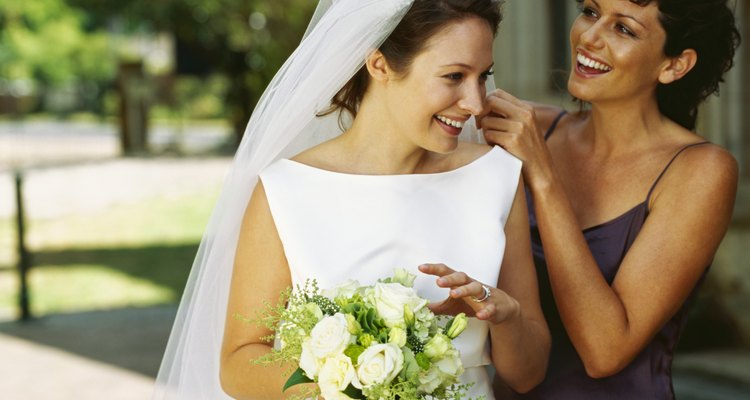
Stockbyte/Stockbyte/Getty Images
Brides wear veils as part of their wedding attire, primarily to show purity. The bridal veil was originally invented by pagans to ward off evil spirits who might try to take away the purity of the bride. The idea of purity, symbolized through a veil, carried over into the Jewish religion and the Christian religions. The modern bridal veil comes in a variety of styles reflective of modern fashion and taste.
History of the Veil

Creatas Images/Creatas/Getty Images
The wedding veil dates back to the ancient empires of the Romans and the Greeks. Brides wore veils in pagan wedding ceremonies to protect the bride from evil spirits. The veils worn by brides at this time were brightly colored in red or yellow. Pagans believed that red and yellow were colors that could protect the bride. The veil also symbolized the tradition of protecting the bride from the eyes of the groom. It was considered bad luck for the groom to see the bride before the wedding.
Significance in the Jewish Religion
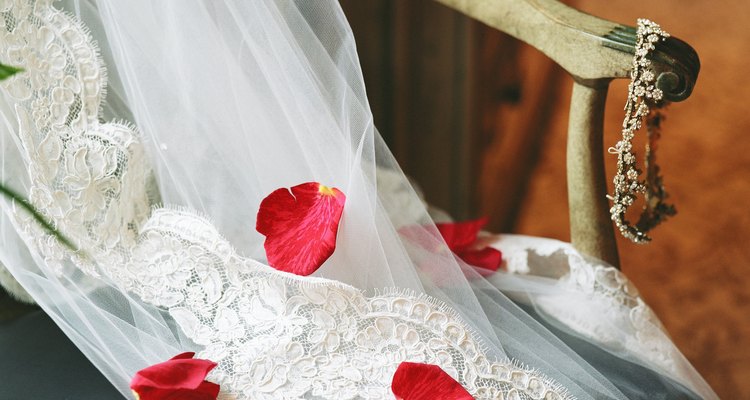
Jupiterimages/Photos.com/Getty Images
Brides in the Jewish religion wear a wedding veil to cover the divine light emanating from the bride. The soul of the bride is considered to be pure, divine and holy. The souls of both the bride and groom are in an elevated state during the wedding ceremony, meaning they are closer to God than on a normal daily basis. The veil covers the light which emanates from the bride because it is believed that holiness needs privacy.
Significance in Christian Weddings
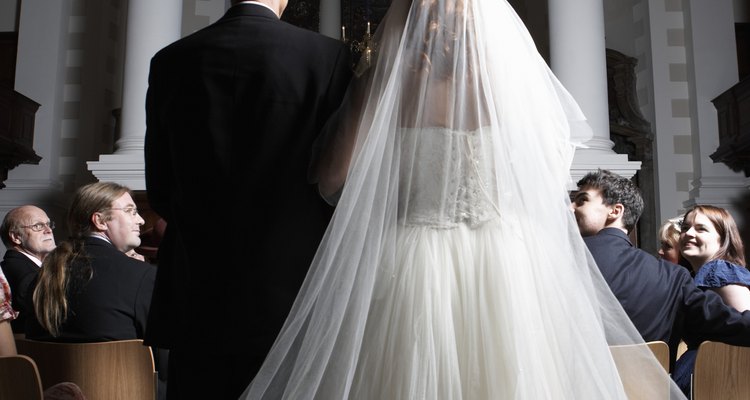
Michael Blann/Digital Vision/Getty Images
Christian weddings traditionally had the bride and groom wearing crowns of flowers and twigs. This symbolized the sacrifices that both the bride and groom would have to make throughout their marriage. The wedding veil was introduced into the Christian wedding in the early 19th century. Christians began to wear the veil to symbolize to the groom and wedding guests that the bride was pure.
Types of Wedding Veils
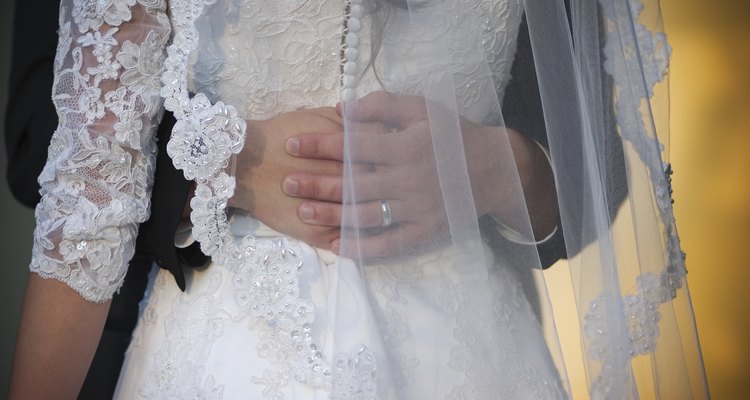
Cindy Singleton/iStock/Getty Images
Veils that were made during pagan times were made primarily out of a thin yellow or red cloth. Jewish wedding ceremonies introduced the white veil into bridal fashion. Jewish brides traditionally wore long, white lace veils that covered the brides face and body. Wedding veils that cover the entire body can still be found today in bridal fashion. Modern bridal fashion offers a variety of lengths for bridal veils. Veils can be as long as the train of the wedding dress or so short that the hem of the veil barely touches the shoulders of the bride.
Features of Modern Veils
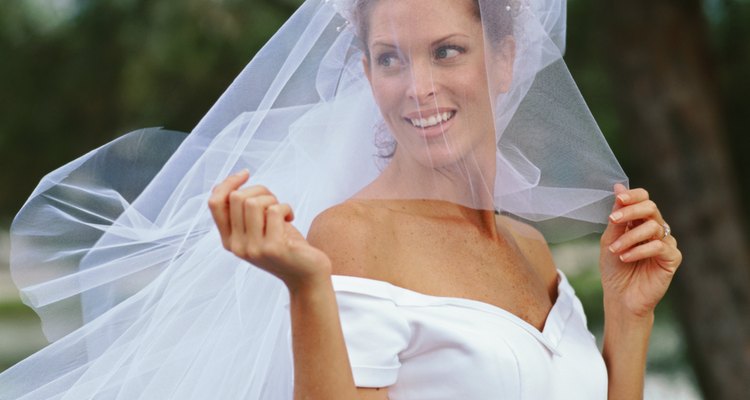
Stockbyte/Stockbyte/Getty Images
Veils are primarily made from lace or tulle and they have two parts; one part that stays stationary in the back of the head and the other part which is draped over the bride’s face. The part of the veil which drapes over the bride’s face is lifted at the end of the wedding ceremony and placed on the back of the head. The lace or tulle used for wedding veils is either white or off-white. The type of white used in the veil does not have any significance; the bride chooses white or off-white depending on which color she feels compliments her skin tone the best.
Related Articles

What Is the Meaning of a Ring in the ...

The Meaning of a Single White Rose

Coptic Orthodox Dress Etiquette

What Do Chinese Women Wear?

Wedding Dress Styles From the '70s

Bride & Groom Dress Etiquette for a ...

What Do Frog Tattoos Mean?

What Is the Symbolism of Jumping the ...

Prayer Shawls at Jewish Weddings

Why Do Flower Girls Drop Petals?

What Does a Purple Iris Symbolize?

Ideas for an Indian Wedding Anniversary

Liberian Fashions, Styles & Wedding ...

Seventh Day Adventist Wedding Ceremony

A Guide to Preparation for a Hindu ...

Wedding Dress Superstitions

Traditional Indian Gifts for Babies

Christian Vs. Hindu Funeral
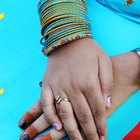
Malay Traditional Wedding Attire

The Meaning of Wedding Bands
References
Writer Bio
Cathy O'Brien is a San Francisco/Bay Area native. She has 15 years of experience writing corporate training materials. Her corporate background is in human resources, sales, management and high-tech start-ups. O'Brien has published business and fashion articles on eHow and Answerbag. She earned her Master of Business Administration from Dominican University and her Bachelor of Arts in English/writing from the University of San Francisco.
Photo Credits
Stockbyte/Stockbyte/Getty Images